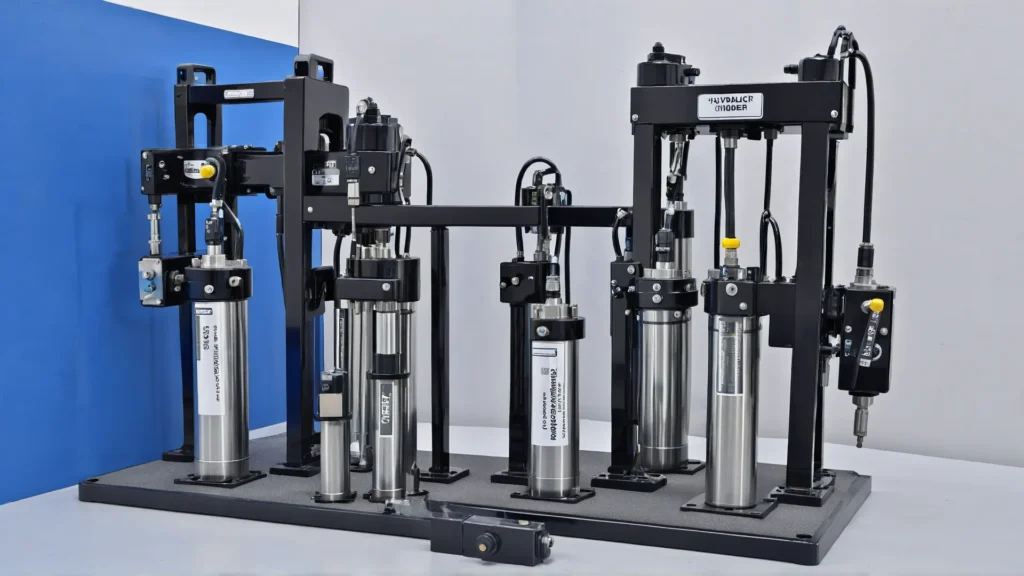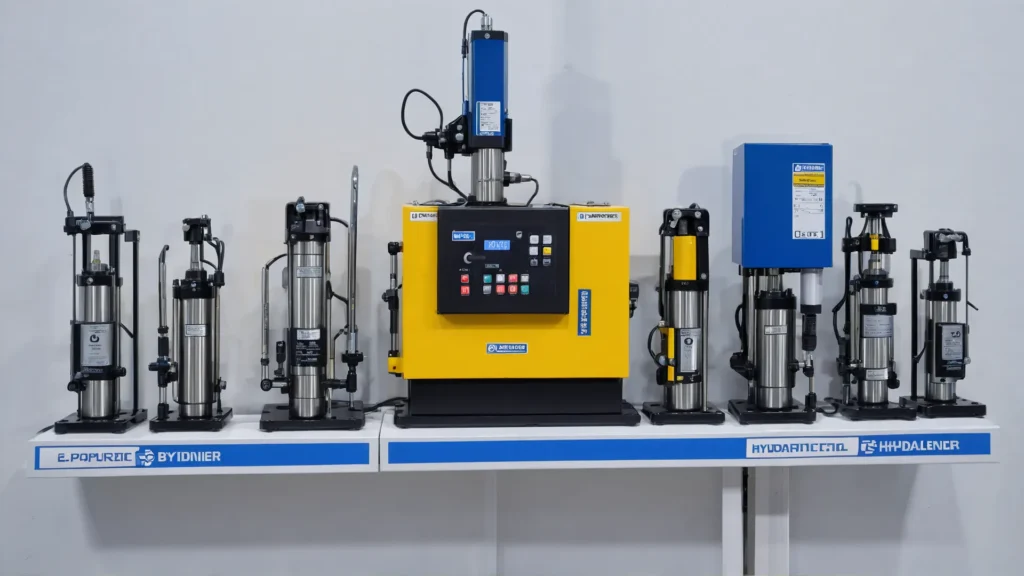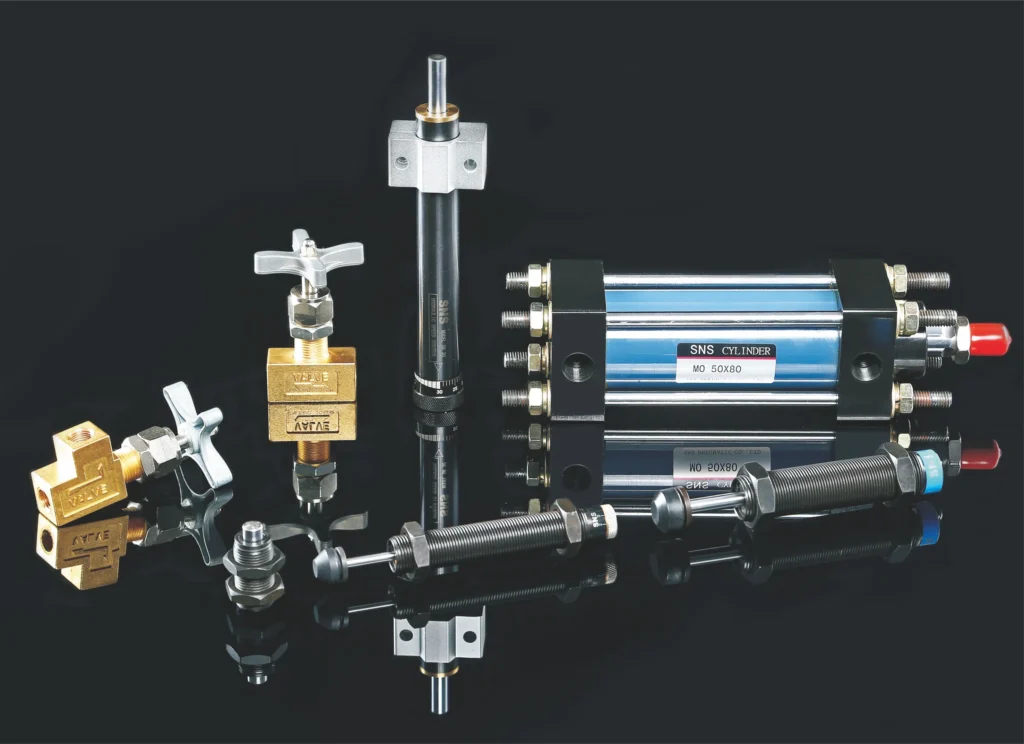Types of Hydraulic Cylinder End Cap
Hydraulic cylinder end caps come in various types, each serving a specific purpose.
From threaded and welded to bolted and tie-rod styles, the right end cap ensures optimal performance and longevity.
In this blog post, we’ll explore the different end cap types and help you choose the best one for your application.

What Are the End Caps of a Hydraulic Cylinder
The end caps of a hydraulic cylinder are the metal that seal the ends of the cylinder barrel. They contain ports that allow hydraulic fluid to flow in and out, enabling the cylinder to extend and retract.
Welded end caps
Welded end caps are a type of hydraulic cylinder end cap that are permanently attached to the cylinder barrel using a welding process. This creates a strong, leak-proof seal between the end cap and the barrel. Welded end caps are often used in high-pressure applications or situations where the cylinder will be subjected to heavy loads or intense vibrations.
One advantage of welded end caps is their simplicity and durability, as there are no additional parts or seals that can fail. However, welded end caps can be more challenging to repair or replace if damaged.
Tie-rod style end caps
Tie-rod style end caps are a common type of end cap used in hydraulic cylinders. In this design, the end caps are held in place by long threaded rods, called tie rods, that run the length of the cylinder barrel and are secured with nuts on each end. The end caps have holes that allow the tie rods to pass through, and seals are used to prevent leaks between the end caps and the barrel.
Tie-rod style end caps are easy to assemble and disassemble, making maintenance and repair simpler. They are suitable for a wide range of applications and pressure ranges.
Threaded end caps
Threaded end caps are another option for hydraulic cylinders. As the name suggests, these end caps feature threads that allow them to be screwed directly into the ends of the cylinder barrel. The threads provide a tight, secure fit and eliminate the need for additional fasteners or tie rods.
Threaded end caps are often used in smaller hydraulic cylinders or in applications with lower pressure requirements. They offer a compact design and can be easily removed for maintenance or repair. However, the threads can be susceptible to damage or wear over time, potentially leading to leaks if not properly maintained.
Flanged end caps
Flanged end caps are hydraulic cylinder end caps that feature a flat, circular flange extending outward from the cap’s base. This flange provides a larger surface area for mounting the cylinder to other components or surfaces, such as a machine frame or a mounting bracket.
The flange is typically drilled with a series of holes, allowing bolts to pass through and securely fasten the cylinder in place. The number, size, and pattern of the holes will depend on the specific application and the mounting requirements of the hydraulic system.
Flanged end caps offer a stable and robust mounting solution for hydraulic cylinders, particularly in applications where the cylinder is subjected to high loads or vibrations. The larger surface area of the flange helps to distribute the forces more evenly, reducing stress on the mounting points and minimizing the risk of failure or leakage.
Spherical end caps
Spherical end caps, also known as spherical bearings or ball joints, are a type of end cap used in hydraulic cylinders that allow for angular misalignment between the cylinder and the machine component it is attached to. The spherical bearing has a ball-shaped protrusion that fits into a spherical cavity, enabling rotation in multiple directions.
This design compensates for minor misalignments that can occur during installation or operation due to improper mounting, machine flexing, or uneven loading. By accommodating these small misalignments, spherical end caps help prevent side loading on the cylinder rod and premature wear of the seals and bearings. Spherical end caps are commonly used in applications where precise alignment is difficult to maintain, such as in mobile equipment, agricultural machinery, and marine systems.
Trunnion mounted end caps
Trunnion mounted end caps are a type of mounting configuration for hydraulic cylinders that allows for pivoting motion in one plane. The end cap features cylindrical protrusions, called trunnions, on either side that serve as mounting points. These trunnions fit into bearing blocks or support brackets on the machine frame, creating a pivot point.
Trunnion mounts are used when the cylinder needs to accommodate angular movement during extension and retraction, such as in steering mechanisms, boom lifts, and backhoe stabilizers. By allowing the cylinder to pivot, trunnion mounts help reduce bending stress on the cylinder rod and body, which can extend the life of the cylinder.
Trunnion mounted end caps can be designed with either fixed or adjustable centers. Fixed center trunnion mounts have the trunnions welded or bolted in a permanent position, while adjustable center trunnion mounts allow for some adjustment to the center distance between the trunnions to accommodate different mounting configurations.
In conclusion
Hydraulic cylinder end caps come in various types, each serving a specific purpose in ensuring optimal performance and longevity.
To learn more about hydraulic cylinder end caps and how they can benefit your application, contact our experts today.



